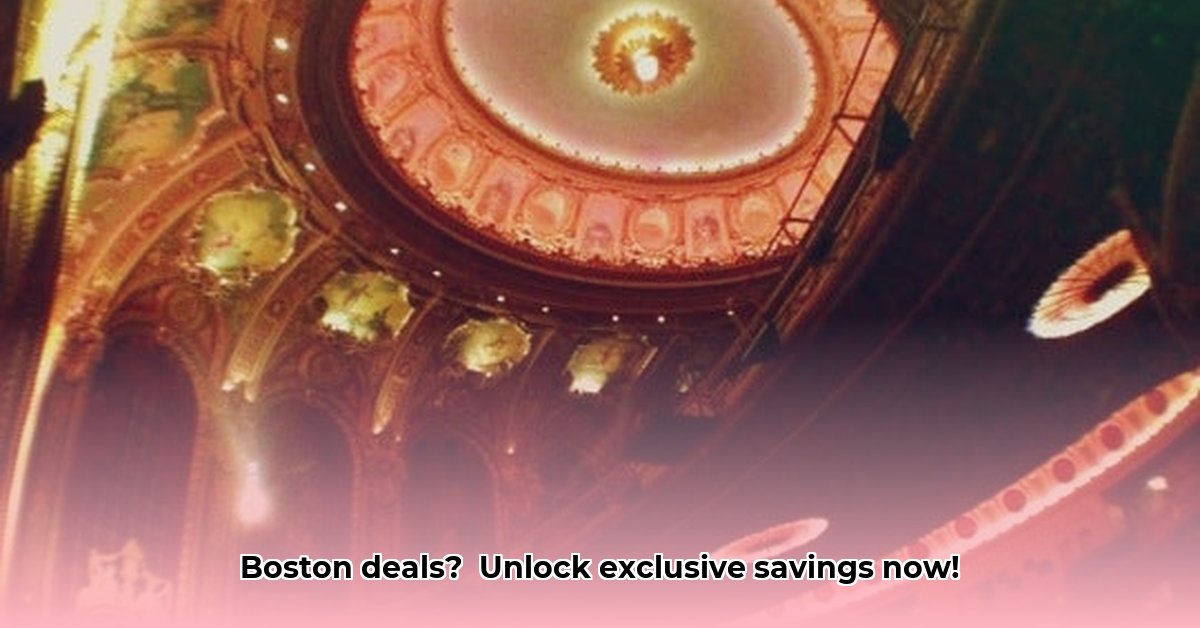
Goldstar Boston MA: BosTix and the Quest for Affordable Arts
BosTix, a ticket platform operated by ArtsBoston, aims to democratize access to Boston's vibrant arts scene. But is this ambitious goal truly achievable? This case study examines BosTix's impact, analyzing its operational model, competitive landscape, and potential for long-term sustainability. We'll explore whether BosTix is effectively bridging the gap between affordable arts experiences and the financial realities of both arts organizations and their audiences.
BosTix: A Matchmaker for Arts and Audiences
BosTix functions as an intermediary, offering discounted tickets to connect arts organizations with a broader audience. This symbiotic relationship promises mutual benefit: increased attendance and revenue for organizations and accessible arts experiences for individuals. But does this theoretical win-win translate into tangible results? This case study will analyze the evidence.
The Two Sides of the BosTix Coin: Value for Arts Groups and Attendees
For arts organizations, BosTix incentivizes higher attendance, directly combating empty seats and lost revenue. Beyond simply filling seats, the platform offers data-driven insights into audience demographics and preferences. This valuable information could be leveraged for targeted marketing, potentially leading to sustained growth, yet its effective utilization remains a key question. How are organizations using this data, and are they seeing a return on investment?
For attendees, the primary benefit is affordability. This is crucial for broadening access and preventing the arts from becoming an exclusive privilege of the affluent. However, the system's success hinges on achieving critical mass: sufficient participation from both arts organizations and ticket buyers. Is BosTix attracting enough of both to create a self-sustaining ecosystem?
How BosTix Works: The Mechanics of the Marketplace
While precise financial details remain undisclosed, it’s reasonable to assume BosTix operates on a commission-based model, earning a percentage from each ticket sold. This lack of transparency, however, prevents a comprehensive analysis of its long-term financial viability. Understanding the commission structure and operational costs is critical for assessing its sustainability and potential for future growth. Further transparency from ArtsBoston could greatly benefit the platform's overall assessment.
The Competitive Landscape: BosTix and the Big Players
BosTix faces stiff competition from established giants like Ticketmaster, as well as other discount ticket platforms such as Goldstar (where operational). To thrive, BosTix must establish a unique selling proposition (USP) – a compelling differentiator that sets it apart. This might involve superior user experience, a strong brand identity, or unique features catering to the needs of both arts organizations and attendees. A comparative analysis with competitors is necessary to fully gauge BosTix's market position and identify areas for improvement.
Data's Potential: Is BosTix Delivering on its Promise?
BosTix touts its data-driven approach as a key benefit for arts organizations. But is this claim substantiated by evidence? Concrete examples of how this data has led to improved marketing strategies, increased attendance, or higher revenue are needed to validate this assertion. Further research, including surveys and case studies of participating organizations, is necessary to fully evaluate the efficacy of BosTix's data analytics capabilities.
Case Study Findings: Strengths, Weaknesses, and Challenges
BosTix demonstrably enhances arts accessibility, bringing affordable cultural experiences to a wider audience. However, its success is contingent on several factors. The platform's reliance on a commission-based model necessitates a detailed cost-benefit analysis to assess its financial sustainability. Another crucial weakness is the lack of transparency in its financial operations, making external assessment difficult. Additionally, the platform's user experience requires improvement, particularly regarding online features and ease of use. Gaining critical mass among both arts organizations and ticket buyers remains a key challenge.
Discussion: Implications and Recommendations
BosTix's future trajectory hinges on addressing its current hurdles. Improving the user experience, particularly through enhanced online functionalities, is paramount. Also, expanding payment options and enhancing communication surrounding ticketing policies are essential. A strategic focus on partnerships with related organizations could increase reach and visibility. Increased transparency in its financial model would boost trust and potentially attract further investment.
Conclusion: A Verdict on BosTix's Impact
BosTix presents a compelling model for increasing arts accessibility in Boston. Its impact is significant, generating millions in revenue for participating organizations and offering affordable arts experiences to a wider audience. However, its long-term sustainability depends on addressing several critical challenges, particularly enhancing transparency and improving the user experience. Further research and data analysis are required to fully evaluate its long-term success and potential for broader impact.